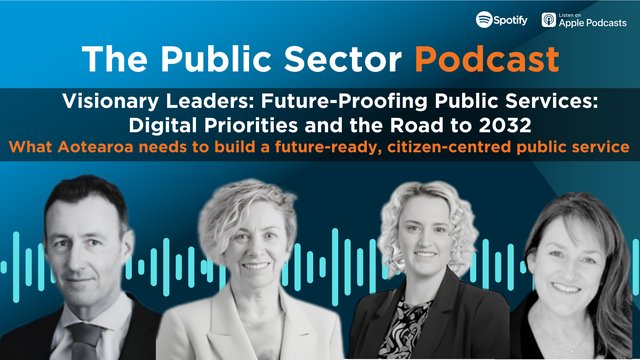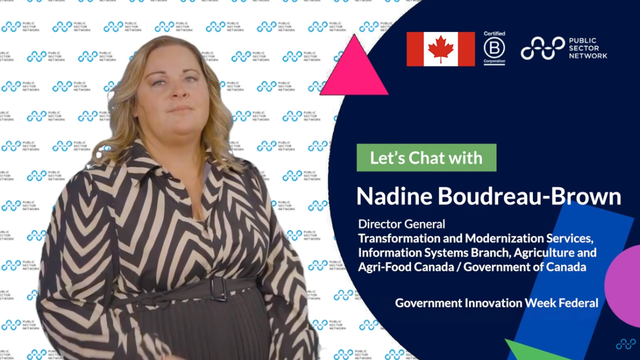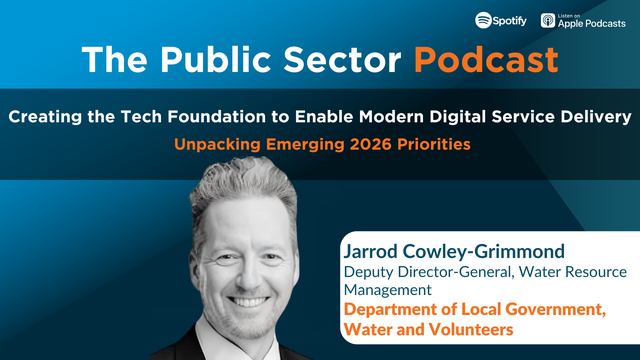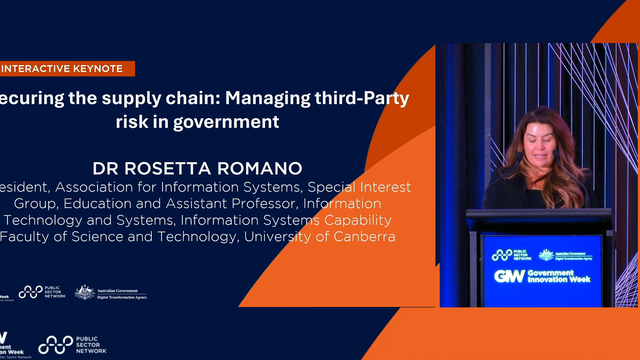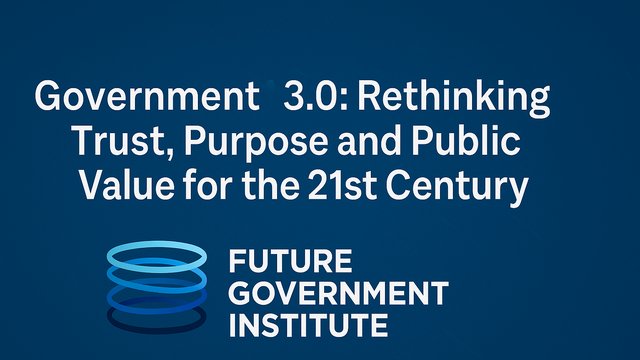
Gain Insights from Three Organizations Tackling the Skills Gap
Digital transformation and innovation have exploded our world into a fast-paced, technological environment that is constantly changing and evolving. Unfortunately, the skills in the current workforce – mainly the public sector, that are required to use digitization to best deliver services have been lagging significantly behind.
The Digital Skills Gap Index 2021 reveals that most economies are failing to bridge the gap, although Singapore is holding the top spot out of 134 countries reviewed with a 7.8 out of 10 ranking, while countries like Canada sit at #23 with 6.5, the United States at #26 with 6.3 and Australia at #33 with 6.1 out of 10. Most concerning for Australia is the cyber security skills gap which could see up to 30,000 unfilled positions in four years, nearly twice the figure forecasted by AustCyber before the pandemic.
Why the shortfall? Well, while private companies often lead in adopting and leveraging digital innovation, governments struggle with a number of challenges:
- Legacy systems: Legacy systems are a major challenge for government agencies across the globe. In Australia for example, the employment services system itself has issues at every stage from contracts with job agencies, staff at those agencies, compliance measures imposed on clients, and an unhelpful system for employers. So this botched system often finds jobseekers unsuitable, short-term jobs.
- Workplace Cultures: Governments still struggle with outdated workplace culture enabling bureaucratic and hierarchical management, rigid procurement practices, and fewer opportunities for career advancement.
- Rapid technological advancements: Governments typically have an inability to keep up with artificial intelligence (AI), robotics and other emerging technologies which are happening in shorter cycles, changing the very nature of the jobs that need to be done - and the skills needed to do them - faster than ever before.
- Bureaucratic hiring processes: Outdated and lengthy hiring processes fall short on recruiting the necessary talent. This process is often curbed by policies and processes which can leave a candidate waiting months for a decision - and this is the time where competing private organizations can swoop in with their streamlined hiring processes, recruiting the top talent before they’ve had their third government interview.
- Aging populations: We also have to acknowledge the reality of an aging population (resulting in an aging workforce) which leaves these candidates lacking the digital skills necessary to fulfill the position. So when top talent is poached and candidates are then hired to fill these positions when they aren’t in fact qualified, in comes short employee retention, as the Harvard Business Review highlights that 80 percent of employee turnover is due to bad hiring decisions.
But all is not doom and gloom! Read on to find out how these 3 organizations have put strategies and initiatives in place to combat the digital skills shortage, demonstrating that overcoming this challenge requires a multifaceted approach focused on education, workforce development, and policy reform.
Government of NSW
Challenge: Australia’s Digital Pulse Report 2022 estimates that by 2027, Australia will need over 1.2 million IT workers to keep pace with the rapid transformation of businesses. Homing in on NSW, as of 2020, the digital skills gap was hindering the public sector to work in a more responsive, agile way and impacted the delivery of innovative digital ICT solutions to meet customers’ expectations. The Premier of NSW, Chris Minns stated that; "under the former government we saw apprentice and trainee numbers plummet, as NSW lost out on vital skilled workers in priority areas like transport, electricity and IT.”
Initiatives: In November 2023 the Minister for Skills, TAFE, and Tertiary Education, Steve Whan, officially launched the NSW Digital Skills and Workforce Compact. The initiative will have a reach of 1.7 million students and represent over 340,000 digital workers in NSW and will promote digital careers across the state. The partnership will support industry in developing and implementing new employment pathways, giving new workers on-the-job training experiences to start a long-term career in the digital industry.
Its goals? To fill 85,000 digital industry jobs by 2030 and to transform the perception of digital careers. The compact hopes to enhance diversity in the sector, collaborate to create new pathways for career advancement, reskill and upskill, and to establish a collaborative platform with universities, TAFE, school curriculum providers, and industry experts to create a Digital Education Forum dedicated to enhancing tech education and industry partnerships.
Another initiative on the pass is the NSW Public Sector Apprentices and Trainees Program, a $93.5 million investment which is the state’s commitment to employ 1000 extra apprentices and will target specific industries such as IT and Cyber which have significant skills shortages.
Outcome So Far: As these initiatives are still fresh on the scene and look promising, hard numbers are yet to be published; however a new action plan for the roll-out of the NSW Digital Skills & Workforce Compact will be made every two years with the first currently focused on broadening diversity in the NSW digital workforce with an in-depth labour analysis to determine clear, ongoing diversity metrics and how to target each demographic.
The first roll-out is also committed to change perceptions around tech and digital careers to achieve diversity in expertise. With the industry changing rapidly, a new range of skills are needed. So, through targeted messaging campaigns and resources the goal is to attract people who never thought of themselves as ‘IT professionals’ into the conversation.
Looking to the NSW Public Sector Apprentices and Trainees Program – the application process has now begun for this initiative. With positions open for 1000 apprentices and trainees across NSW, the future is looking positive on closing the skills gap across the State.
United States Federal Government
Challenge: 90% of the jobs in the United States by 2030 will require digital skills and one third of American workers lack any digital skills. Naturally then, the Federal United States government is facing major challenges attracting and retaining qualified IT workforce, in particular in the cybersecurity field which puts federal agencies at risk. The government also needs a diverse workforce as the gender and racial diversity gap is growing in the tech field (less than one-quarter of technology-related positions are held by women — women of colour hold only 4% of those roles).
Further, a lack of skills development and the aging workforce has caused silos which push new IT recruits to private companies with better mobility. The federal guidelines around degrees and requirements narrow the pool for talented candidates so the government needs to put more of an emphasis on skills over degree requirements and upskilling existing workers to create career pathways and opportunities.
Initiative: Initiatives like the United States Digital Service (USDS), founded by President Obama in 2014 have been pivotal, offering tech talent short, impactful tours of duty in government to work on high-priority projects. The U.S. Digital Service brings together the best engineering, design, and government talent to change government’s approach to technology. Their strategy is simple: Recruit top designers, engineers, product managers, and digital policy experts, then pair these digital experts with the nation’s leading civil servants then use these teams to address some of the most critical government services.
Outcome So Far: The USDS has worked hard to broaden diversity in their workforce and have increased their numbers successfully, although they still remain significantly lower than they should be. At this stage, 32% of employees come from Asian, Black, African American and Hispanic backgrounds. Looking at age diversity, for the USDS staff, 8% of are aged 20-29, 49% aged 30-39, 31% aged 40-40 and 12% over 50. Looking at gender, 38% male, 57% female and 6% other, while 19% identify as LGBTQI+ and representing the population of those with disabilities employed are 14%.
When we look at the increase in diversity of the US federal government workforce as a whole, these results are comparable with regards to racial diversity but looking at the inclusion of other genders and their representation in the national statistics, the results have been stunted by a number of reasons including the lack of engagement of LGBTQI+ population with federal agencies. Although efforts are being made to increase the equity of these groups, vast improvements still must be made.
Taking their experience and learnings, the USDS has since worked with more than 20 Federal agencies so far to build their digital abilities and over the past nine years have expanded from a handful of staff to over 200 professionals through training and mentoring in the digital skills space. Since 2016 USDS has partnered with the White House’s Office of Federal Procurement Policy to run and immersive development and training program for digital services procurement to help contracting professionals across government use best practices and more than 850 professionals have graduated so far.
By early 2023 their digital skills hiring process reform which was rolled out in 2020, has restored fair and open access for all applicants, shortened the hiring timeline (from 45-16 days), and has ensured that applicants are qualified for the respective positions.
Singapore’s SkillsFuture Program
Challenge: A recent survey by Economist Impact revealed that across Singapore a common understanding is lacking between employers and employees about future skills and how best to develop them. 49% of employees also have a poor understanding of what skills are needed in the current market. However to ensure continued growth, the Singapore government is committed to the enhancement of robust networks for faster connectivity and secured digital transaction so the government aims to increase the number of digitally skilled workers by 55% from the current 2.2 million in the workforce.
Initiative: SkillsFuture is a national movement to provide Singaporeans with the opportunities to develop their fullest potential throughout life, regardless of their starting points. It’s collaboration of Future Economy Council, education and training providers, employers, and unions to drive Singapore's next phase of development towards an advanced economy and inclusive society. More specifically, SkillsFuture for Digital Workplace 2.0 (SDFW 2.0), is a training programme that focuses on four key areas: automation, cybersecurity risk, data analytics, and in-demand digital tools. It encourages continuous personal and professional development in the digital domain.
Outcome So Far: Over 660,000 people last year used the initiatives the programme supports which falls in line with the importance Singaporeans place on upskilling which has emerged as the top goal for L&D professionals in Singapore in 2023, according to LinkedIn's 2023 Workplace Learning Report.
SkillsFuture Enterprise Credit Programme was also launched to help cover the cost of upskilling where eligible enterprises can apply for up to $10,000 in funding for certain government programmes and courses. About 540,000 Singaporeans benefited from initiatives supported by SkillsFuture Singapore in 2020 which was 40,000 more than in 2019.
July 2022 saw the launch of the Skills Development Partnership where five sectors including tech will have an organization look at their skills development needs.
In the Singapore Budget 2023, Deputy Prime Minister Lawrence Wong announced the budget’s focus on reskilling and upskilling Singaporeans through SkillsFuture to aid the country’s resilience and will invest heavily into workers’ career pathways and therefor the SkillsFuture ecosystem.


